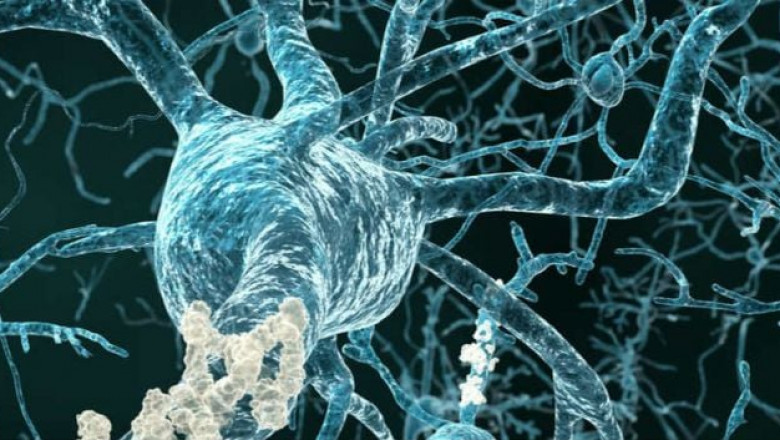views
Rise of Peptides in Treating Complex Metabolic Conditions
Metabolic disorders arise due to defects in cellular pathways controlling energy production and nutrient processing. These conditions pose therapeutic challenges due to their multisystemic nature. Conventional small molecule drugs have limitations in addressing complex disorders. Recently, peptide therapeutics have emerged as a promising alternative with their potent and selective actions.
Targeting Multiple Pathways Simultaneously
Peptides offer advantages over small molecules by their ability to target multiple pathways and cell types related to a disease. For example, metabolic hormones regulate various tissues in a synchronized manner through G-protein coupled or intracellular receptors. Peptide mimetics can restore hormonal balance through multi-target mechanisms. In diabetes, glucagon-like peptide 1 (GLP-1) improves glycemia by stimulating insulin secretion and suppressing glucagon levels. It also reduces food intake and body weight by acting in the central and peripheral nervous systems. Such multitasking abilities address metabolic disorders holistically versus single gene/protein approaches.
Customized Actions through Receptor Specificity
Peptide Therapeutics In Metabolic Disorders bind cellular receptors with high selectivity and affinity. This allows designing ligands to differentially modulate physiologic versus pathologic receptor activities. For instance, amylin is co-secreted with insulin from pancreatic β-cells to slow gastric emptying and reduce food intake. Amylin analog pramlintide is used for diabetes by selectively activating anorexigenic amylin receptors over others linked to amyloid formation. Receptor specificity permits customizing peptide effects for optimized metabolic control with minimal adverse effects.
Regulating Multiple Organs Coordinatedly
Metabolic homeostasis requires coordinated functions of diverse organs like pancreas, liver, adipose tissue and muscles. Native peptides facilitate inter-organ communication through endocrine, paracrine and autocrine pathways. Therapeutic peptides can restore such organ cooperation that is disrupted in metabolic disorders. For example, fibroblast growth factor 21 (FGF21) mimics enhance glucose uptake in adipose tissue and liver while reducing gluconeogenesis. This synchronizes actions on key insulin sensitive tissues to control hyperglycemia in type 2 diabetes. Synthetic peptides thus rebuild lost cross-talk between metabolism regulating organs.
Reversible Nature allows Flexible Dosing
Peptide drugs rapidly gain/lose effect upon administration/clearance due to their hydrophilic nature and susceptibility to proteolysis. This reversible pharmacology permits titrating drug levels conveniently through adjustable doses. For instance, liraglutide dosing in diabetes can be escalated weekly from 0.6 mg to 1.2/1.8 mg based on glycemic responses. Such dose flexibility is crucial for personalized glycemic management in a chronic progressive disease. In contrast, gradual dose adjustments are challenging with irreversible small molecule medicines.
Promising Peptide Candidates for Metabolic Control
Several peptide candidates currently in clinical trials hold potential for improving metabolic health:
- Semaglutide (Novo Nordisk): A GLP-1 analog approved for diabetes, it also induces weight loss by reducing appetite. Its weekly dosing increases patient adherence.
- Tirzepatide (Eli Lilly): A dual GIP/GLP-1 agonist under review showing superior A1c and weight lowering versus existing incretin therapies.
- CagriSema (Zealand Pharma): This semaglutide formulation for obesity reduces appetite via once-daily nasal spraying, bypassing gastrointestinal tract.
- Beloranib (Zafgen): Acts on hunger-reducing melanocortin-4 receptors and may assist bariatric surgery induced weight loss.
- Olpasiran (Alnylam): RNAi therapy targeting angioprotein angiopoietin-like 3 (ANGPTL3) to lower triglycerides and reduce cardiovascular risk.
- FGF21 Analogues: Enhanced versions like PF-05231023 could aid fatty liver disease, hypertriglyceridemia and non-alcoholic steatohepatitis.
Peptide medicines offer differentiated advantages over small molecules in metabolic therapy through multi-targeted, physiologic and reversible actions. Their potential to coordinate systemic metabolism and influence multiple organs simultaneously addresses root causes of these chronic diseases. Several promising candidates already in clinical testing signify bright prospects of peptides to substantially improve treatment algorithms for prevalent metabolic disorders. Further research would exploit this class to achieve holistic metabolic benefits with improved safety, tolerability and outcomes.
Get this Report in Japanese Language-代謝疾患におけるペプチド治療薬
Get this Report in Korean Language- 대사 장애의 펩타이드 치료제
About Author-
Money Singh is a seasoned content writer with over four years of experience in the market research sector. Known for her strong SEO background, she skillfully blends SEO strategies with insightful content. Her expertise spans various industries, including food and beverages, biotechnology, chemical and materials, defense and aerospace, consumer goods, etc. (https://www.linkedin.com/in/money-singh-590844163)


















![[1 (888) 326-1024] How to Get in Touch with Expedia 24/7 Support Team: Phone, Email, and Chat Options](https://timessquarereporter.com/public/upload/media/posts/2025-06/01/1-888-326-1024-how-to-get-in-touch-with-expedia-24-7-support-team-phone-email-and-chat-options_1748757002-s.jpg)



Comments
0 comment